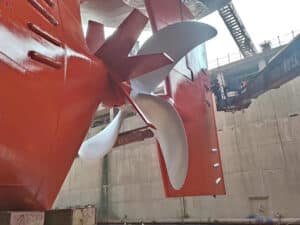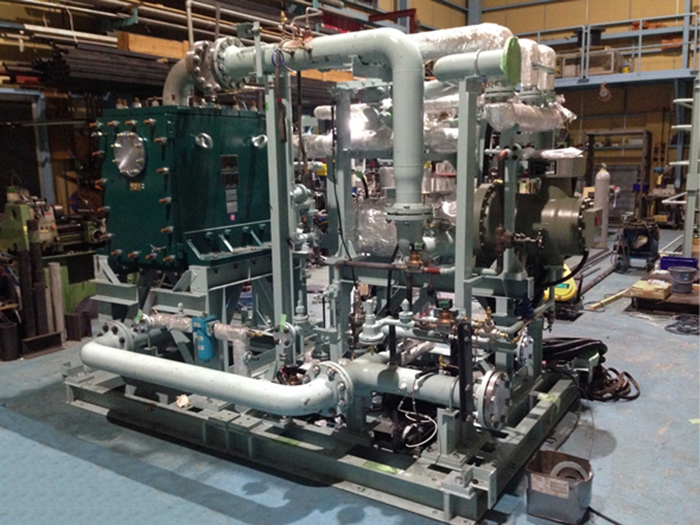
Kobe Steel puts turbocharger waste heat to work
Written by Nick Blenkey
Kobe Steel's new binary cycle power generation system before mounting
MARCH 28, 2017 — Kobe Steel, Ltd. plans to start marketing a new binary cycle power generation system for ships. It says the new system is the first in the world to generate electricity from the exhaust heat emitted by the ship’s turbocharger.
Kobe Steel, Asahi Shipping Co., Ltd. and Miura Co., Ltd. began joint development of a binary cycle power generation system for ships in April 2014. Land-based testing of the system was successfully completed in September 2015. In December 2016, the system was retrofitted to an Asahi Shipping coal carrier by Tsuneishi Shipbuilding and successfully sea trialed, and recently it received approval from ClassNK. Having passed these tests, the new system will be marketed from April 2017, with sales starting in April 2019. Kobe Steel is in charge of marketing and sales.
In the past, says Kobe Steel, the waste heat from the ship’s turbocharger was not used. The electricity produced by the new system from the exhaust heat emitted by the ship’s turbocharger. serves as auxiliary power for the ship and contributes to the efficient utilization of energy.
In the sea trials, Kobe Steel confirmed that an engine output of 7,500 kW per hour generated 125 kW of electricity. This is equivalent to about 20 to 25 percent of the fuel used in marine generators, depending on the conditions, and is the largest scale of power generation from exhaust heat on a ship.
Features of the power generation system
- As the binary cycle power generation system is applicable for engines in the 5,000-kW class and higher, which are used by most vessels, the system can be used in a wide variety of ships.
- Marine engines undergo large load fluctuations. Kobe Steel’s screw-type binary cycle power generation system can generate electricity under a wide range of conditions, from high loads to low loads.
- The new system can be retrofitted to ships already in service as the parts can be brought in through the parts hatch, instead of cutting through the hull structure to make an opening.
Development of the system was supported by Japan’s Ministry of Land, Infrastructure, Transport and Tourism and ClassNK and was undertaken with their cooperation.





Leave a Reply
You must be logged in to post a comment.